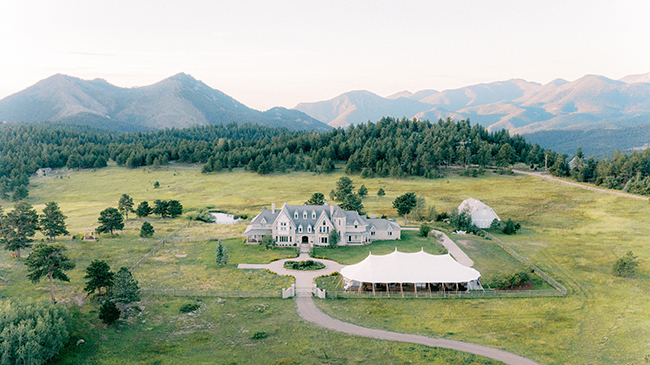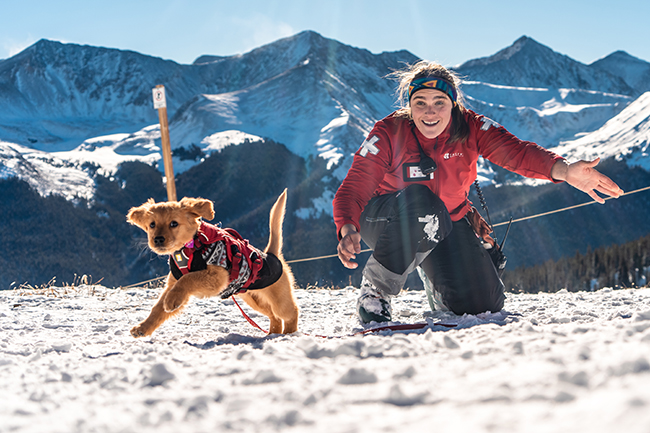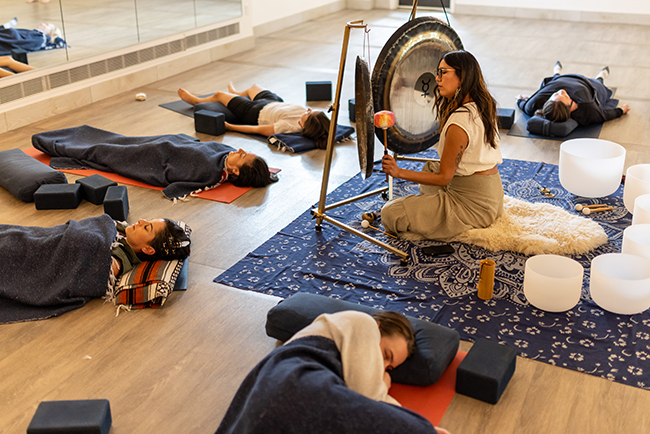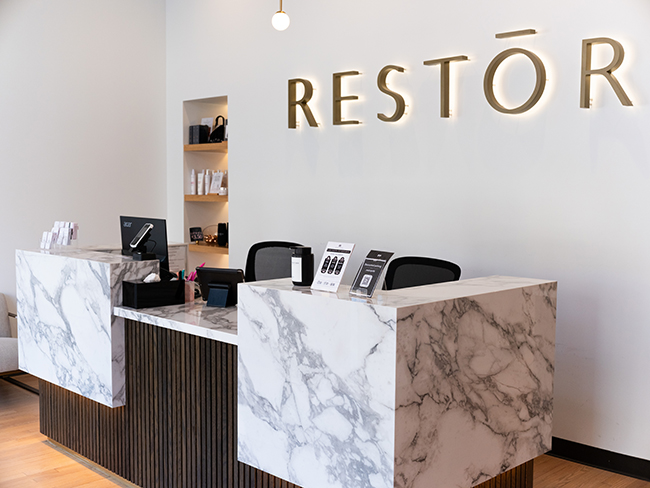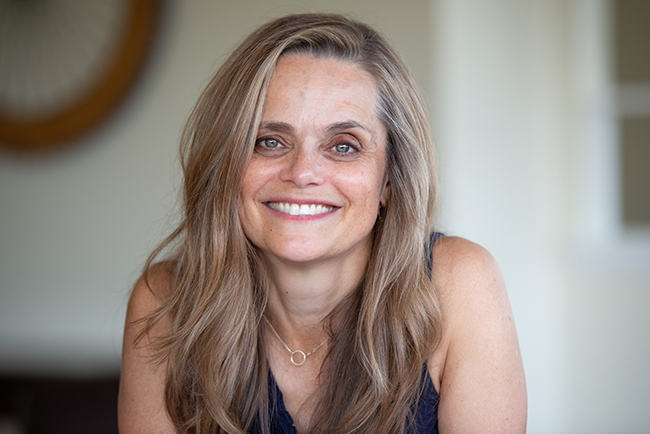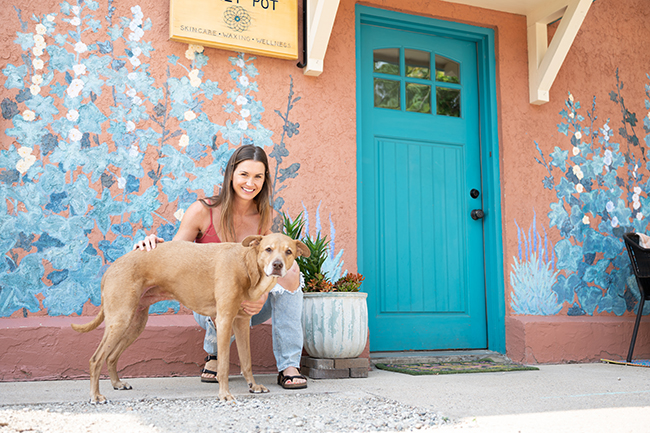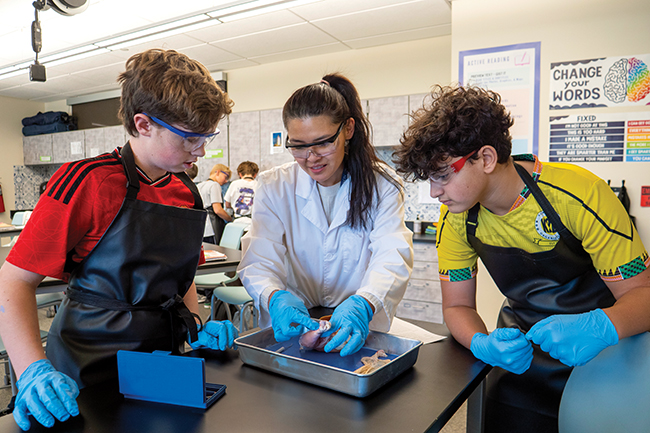Boulder’s Love Languages
04 Feb 2024
Cracking the code for self-love
By Amanda McCracken
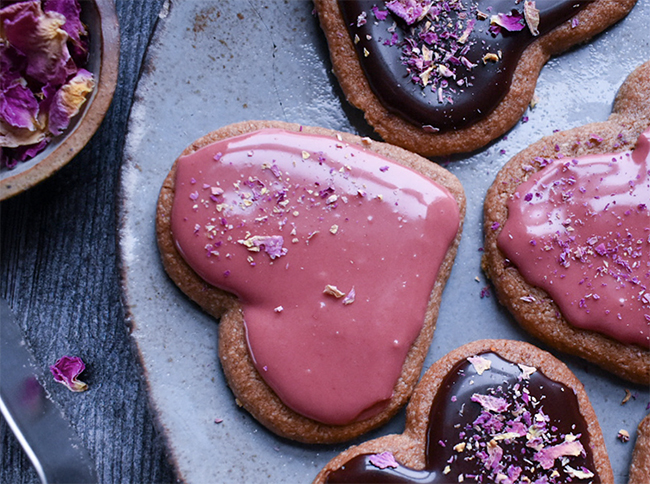
How you define self-love depends, for many, on how you practice it. For the following four individuals working in Boulder, self-love is woven into their chosen profession and how they give back to the community.
Cultivate a Connection Between Mind and Body
Caitlin Gordon, doctor of acupuncture and owner of Amaluna Wellness, says, “It was an act of self-love to change paths a month before my law school deposit was due and decide to pursue Chinese medicine instead. I knew I was going to be happier in a profession where I got to create my own schedule and focus on healing—not least of all because I needed it. I had so many chronic health issues that I’m not sure I would have survived in a field where health and wellness wasn’t the focus.”
One form of self-love Gordon teaches her female clients is to plan their lives in alignment with their menstrual cycles. This, she says, creates a deeper connection with nature and more vitality in the body.
“A healthy menstrual cycle syncs up with the moon’s cycle perfectly. Even post-menopausal women still have a hormonal cycle that fluctuates with the moon every 28 days, with the new moon and full moon correlating with different hormonal peaks and valleys,” explains Gordon. “Depending on how your particular body is synced up with the moon cycle, I recommend planning for more rest and alone-time during late luteal and menstruation, and more exercise and productivity during follicular and ovulation.”
Another form of self-love she encourages is building mind-body-spirit resilience, which she defines as a “sturdiness” or “an expanded capacity to be present with life without collapsing.” This can be accomplished by developing a morning practice.
“Make time to get quiet and tune in with your body, your emotional state and spirit before you get wrapped up in autopilot for the day,” Gordon says. “We need the time to really listen so we can hear the early signals that we’re out of integrity and need to correct course. A morning practice could include meditation, breathing exercises, journaling or something else that helps you self-reflect.”
Nourish Yourself Through Plants
For Tara Lanich-LaBrie, founder of The Medicine Circle, self-love is intricately tied to her relationship with the plant world, specifically practicing and sharing her passion for culinary herbalism. “It’s very difficult to love yourself if you’re not also in connection with the natural world in some way,” says Lanich-LaBrie who forages herbs on her husband’s farm Esoteric Culinary Gardens.
Her interest in the medicinal properties of plants stems from her childhood during which she suffered from several chronic health issues. She began experimenting on her own with different elimination diets. “I started learning as much as I could about how to cook with gluten-free flours to create things that I really wanted to eat with less sugar but still beautiful, still fun, still exciting and still delicious.”
While enrolled at a class at Chicago’s Morton Arboretum, her ecology teacher introduced her to wild mushrooms, specifically the puffball mushroom. “We fried it up on a camp stove in the back of her pickup truck. It was the most delicious thing I’d ever tasted. I realized there was another world right in front of me in the plants. The veil dropped.”
Lanich-LaBrie went on to apprentice with a farmer, attend college to become a painter and complete grad school to become a teacher. Her passions now complement each other as a cookbook author, herbalism course creator and teacher and food photographer. As a painter, she was influenced by the natural world and botany. “Everything that I paint is in layers and layers of colorful, perfect circles made to echo the macro- and microcosmic plant cells and larger natural world.”
Lanich-LaBrie sees food as an offering to ourselves. “Cultivating a relationship with plants feeds back to the self when we’re loving the plants and the food that we’re eating.” She encourages people to practice kitchen herbalism. Simmer black peppercorns in water and strain to clear your sinuses. Add rosemary to roasted vegetables to improve your memory and support your immune system, she says. Add viola flowers, a cultivated relative to the wild violet, to your traditional sugar cookie recipe. They’re soothing for stress and heart supportive, she says.
“I don’t think that you can feed yourself in a good way and not also feel the love that comes from that,” says Lanich-LaBrie.
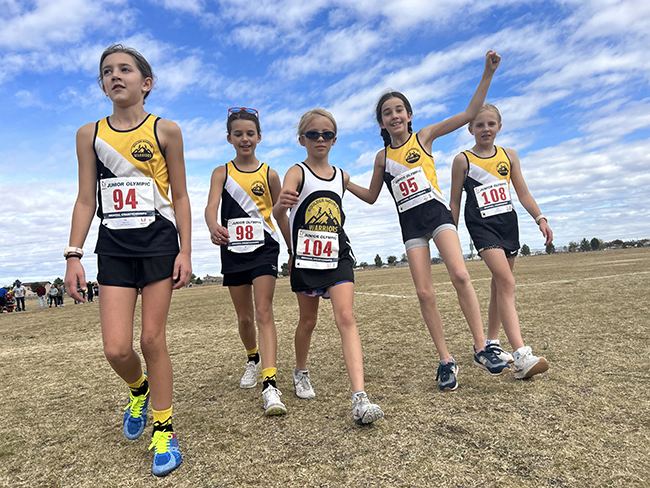
Progress Over Perfection
Self-love has kept Melody Fairchild running for 50 years. It has also informed her thriving coaching practice that has served hundreds of Boulder County youth over the past ten years. Born and raised in Boulder, Fairchild is one of its running legends. In 1990, Fairchild became the fastest high school girl in the U.S. when she won a national cross-country championship. On the track, she was the first American girl to break 10 minutes in the two-mile. As a professional runner, she went on to qualify for the U.S. Olympic Trials in the 10,000-meter run and marathon.
Fairchild is the founder of and head coach of Boulder Mountain Warriors Kids Running Club and the co-author of the book, Girls Running: All You Need to Strive, Thrive, and Run Your Best. The dedication reads, “To all girls. May this book inspire a running journey guided by a self-love so great that nothing can stop you.”
“Progress over perfection!” is written on a sign which hangs from her team’s tent. A member of the Positive Coaching Alliance, Fairchild encourages her young athletes to cultivate self-love by focusing on what is within their realm of control. When the kids are on the starting line and their self-sabotaging thoughts are in full force, she says, focusing on attitude and effort can help put their minds at ease.
Fairchild says it is important to help young athletes develop self-love because it sets the foundation for their ability to have healthy boundaries in relationships. “From self-love stems our ability to fully occupy our physical bodies, to nurture and nourish them and to therefore access authentic, ecstatic joy.”
Self-love is not just about action, explains Fairchild, but also rest. “The greatest way to know how powerful we are is to be still. If we constantly have to test our fitness to prove that we ‘still have it,’ that’s a sure sign that we don’t like ourselves a whole lot,” says Fairchild. “If we listen to what our bodies are telling us in the moment, we will not burn out. Overriding our fatigue or our hunger is sending a message to our nervous system that external validation—not the great internal love—is more valuable, more trusted.”
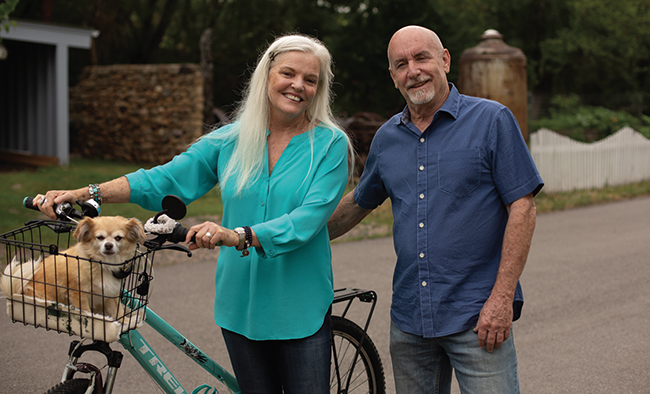
Love Your Neighbor as Yourself
For Pastor Gene Binder, founder of Cornerstone Church, self-love helped him heal from an emotionally abusive father. A rock-bottom self-esteem led him in his 20s to a decade-long use of drugs, first with marijuana and then cocaine. When his marriage was failing, he sought counsel and found a higher calling.
Binder, author of Connecting the Dots, was raised in the conservative branch of Judaism until the age of 10. At the age of 31, Binder became a Christian but still views his core identity as Jewish.
During his time pursuing his master’s degree at Talbott Theological Seminary, Binder grappled with mixed messages he received regarding self-love. “A lot of people come out of this Christian background where they are told that their core identity is a sinner—that you’re really kind of a wretched human, but it didn’t match what I was reading in my Bible.”
When it comes to understanding the importance of self-love, Binder points to a scene in the Bible where Jesus is asked by a Jewish teacher, “What’s the greatest commandment?” Binder explains, “Jesus can’t just nail it down to one, so he says, ‘Love God.’ And the second is, ‘Love your neighbor as yourself.’ It’s basically saying, to the degree that you love yourself will be the degree to which you can love others. You can only give what you can take in. It’s like breathing. If you breathe in, then you have something to breathe out. And that’s what self-love is. If all Jesus had done was sacrifice, he probably would have been dead in a couple of weeks.”
Binder also encourages people to spend time with friends who have conquered negative thoughts and who “speak positivity in your life.”
One of the ways Binder squelched the negative dialogue in his head rooted in childhood experiences was through meditating on scripture. He provides Psalms 139, verses 13 and 14, as an example: “For you created my inmost being; you knit me together in my mother’s womb. I praise you because I am fearfully and wonderfully made; your works are wonderful, I know that full well.”
“As a spiritual leader, I think the key point is finding your value in the creator of the universe. Nobody else thinks higher of you than God,” says Binder.
Hawthorn and Rose Drinking Chocolate
Recipe in Lanich-LaBrie’s forthcoming book, Foraged & Grown (March 2024)
This drink is made to support our physical, emotional and mental well-being. All herbal ingredients can be left out or substituted with a teaspoon of herbs like lavender, chamomile or mint.
Ingredients:
¼ cup seeded rose hips
4 cups water
¼ cup dried hawthorn berries
1 cinnamon stick
1 or 2 slices fresh ginger, or 2 teaspoons ginger powder
2 tablespoons rose petals
Zest and juice of 1 blood orange
10 to 12 ounces 80 to 90% dark chocolate of your choice
2½ tablespoons honey, plus more to taste
2 teaspoons pure vanilla extract
¾ teaspoon sea salt or rose finishing salt
2 teaspoons ground Ceylon cinnamon, ¼ teaspoon reserved for sprinkling on top
Directions:
1. Blend 2 tablespoons of the seeded rose hips in a spice grinder or coffee grinder until they are a fine powder.
2. Combine the water, hawthorn berries, cinnamon stick, 2 tablespoons of the seeded and whole rose hips and ginger slices (if using) in a large saucepan and bring to just a boil over medium heat.
3. Lower the heat to a simmer and add the rose petals (reserving ¼ teaspoon to use for topping) and orange zest and juice.
4. Turn off the heat and cover; let steep for at least 30 minutes.
5. Strain the mixture through a mesh sieve; squeeze out the liquid from the solids and discard them.
6. Now, pour the liquid back into the saucepan and place over low heat.
7. Chop the chocolate roughly and stir into the mixture on the stove, a little at a time, until it is all just melted into the liquid. Do not let the chocolate boil or get too hot—it burns quickly and easily.
8. Turn off the heat as soon as the chocolate begins to melt and continue to whisk until it is melted completely into the liquid. Whisk in the powdered rose hips, honey, vanilla, salt and ground cinnamon and ground ginger (if using).
9. Taste and add more ground ginger, salt, honey or cinnamon as needed.
10. Pour into cups and sprinkle the powdered rose hips, reserved rose petals and cinnamon on top.

